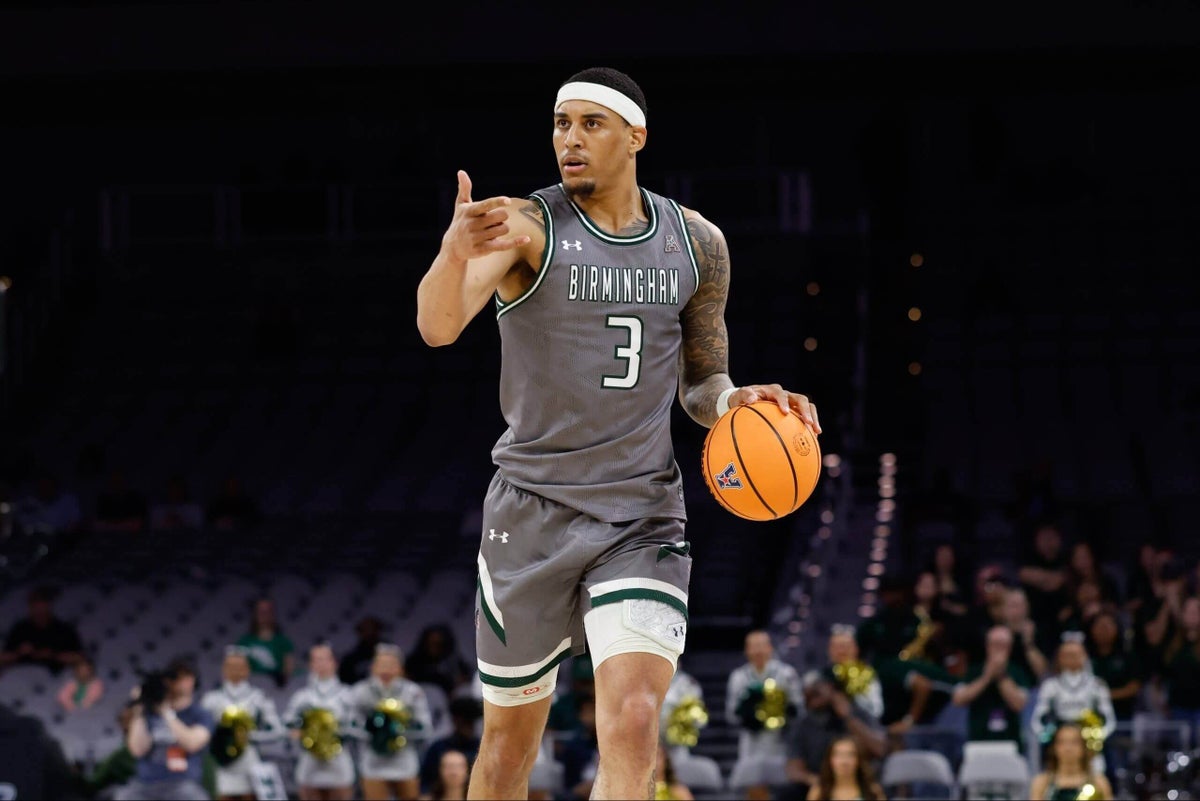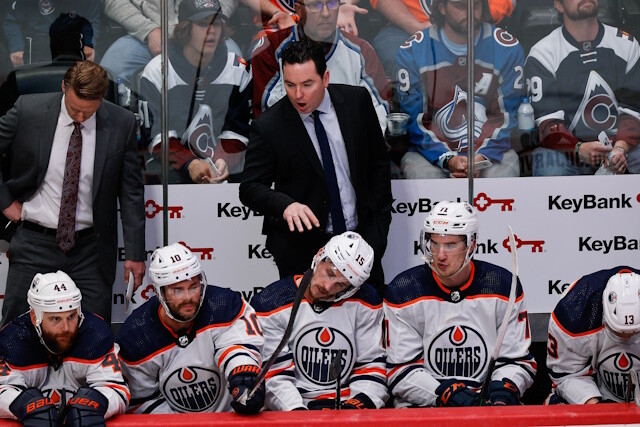By Brendan Marks, C.J. Moore and Lindsay Schnell
As of 11:59 p.m. on Wednesday, college basketball roster construction got more straightforward.
Why? Because that was the deadline for players who had previously declared early for the NBA Draft to officially decide whether they’d be staying in the draft or returning to school. And while some key decisions went down to the wire — thanks, Alabama guard Labaron Philon, for that late-night withdrawal — we now have better clarity on who will (and won’t) be suiting up in college next season.
As for which stay-or-go decisions figure to make the biggest impact on next season? The Athletic’s team of experts has you covered:
Yaxel Lendeborg’s withdrawal makes Michigan a top-five team
Purdue has a legit challenger for the 2026 Big Ten title with Lendeborg withdrawing from the draft. Lendeborg, who averaged 17.7 points, 11.4 rebounds and 4.2 assists last season, was the best frontcourt player available in the transfer portal, and there’s an argument to be made that he should be a preseason All-American.
Lendeborg fits into the Danny Wolf role and is versatile enough to play some small forward, allowing Dusty May to roll out what should be one of the biggest lineups in college basketball with Lendeborg sharing the floor with Morez Johnson and Aday Mara. Add in returner Will Tschetter, and Michigan will challenge Florida for the best/deepest frontcourt in the country.
The question marks for the Wolverines are in the backcourt, but that’s where May has some continuity with the return of Nimari Burnett, Roddy Gayle and LJ Cason. Also adding some upside is four-star guard Trey McKenney, who looked like one of the most college-ready guards during the Nike Hoops Summit. Locked in to start at point guard is North Carolina transfer Elliot Cadeau. He was the starter for a No. 1 seed his freshman year at UNC; the upside is there for this team to get there as well.
Should Houston be the national title favorite?
While Houston had not closed the door on point guard Milos Uzan returning, head coach Kelvin Sampson and assistant Kellen Sampson were operating as if he were going to stay in the NBA Draft, which is why they moved quickly to get a commitment from Creighton transfer Pop Isaacs before the NCAA Tournament even finished.
Well, we no longer have to wonder how the Isaacs experiment would go. Uzan is back, Isaacs is off to Texas A&M and Houston now has three starters returning from the team that was a bucket away from winning the title. Those three returners, combined with the second-best freshman class in the country, according to 247Sports, are one of the best mixes of old talent plus new. That Houston is likely to still start two freshmen makes the Cougars far from the surefire preseason title favorite, but don’t be surprised if the groupthink goes that direction.
It’s hard to bet against Kelvin Sampson, and Uzan was one of the best point guards in the country during the second half of the season. Houston players seem to always get better, and if Uzan and Joseph Tugler show they’re able to give more scoring pop than they did last year, it’s pretty easy to envision this team as one of the contenders come March.
Former Razorbacks guard Boogie Fland withdrew from the draft and chose the Florida Gators. (Eakin Howard / Imagn Images)
Could Florida repeat with the addition of Boogie Fland and the return of Alex Condon?
The premise that UConn had a legitimate chance to three-peat seemed like a real stretch last preseason. The Huskies had just one starter returning and didn’t exactly crush it in the transfer portal. Florida will be the subject of similar storylines this preseason, and its late-spring run of good news indicates that the possibility is at least realistic.
Like Dusty May at Michigan, Todd Golden is likely going to try to go with a huge three-big frontline with Alex Condon, Thomas Haugh and Rueben Chinyelu all returning. Haugh has enough skill that it could work. And once again, Florida is super deep up front with Micah Handlogten also returning; He would start most places.
The worry for the Gators came when Kentucky nabbed returner Denzel Aberdeen, but it worked out for Florida when Fland withdrew from the draft and picked the Gators. His speed should flourish in Florida’s up-tempo system and take some of the pressure off Princeton transfer Xaivian Lee to try to be Walter Clayton. Condon will help the guards as the hub of the half-court offense. Florida’s guards were awesome last year, but they were at their best when Condon could set them up for easy buckets off back cuts and dribble-handoffs.
The backcourt might not be as good, but if Condon and Haugh can make the leap, the Gators could adjust to playing more through their bigs. It’s an interesting mix on paper and more deserving of preseason hype than last year’s Huskies.
Talked with Cedric Coward. I’m in. Draft him. pic.twitter.com/c4w50ADHZ3
— Big DAVE (@BawlSports) May 15, 2025
Cedric Coward’s surprising ascent forces Duke to Plan B — and hurts Kansas in the process
In an ideal world, Duke would have former Washington State wing Coward — who chose the Blue Devils over Alabama out of the transfer portal — starting on the perimeter next season between a pair of likely 2026 first-round picks, Cameron Boozer and Isaiah Evans. Even though Coward only played six games for Wazzu last season before suffering a season-ending shoulder injury, his well-rounded game and gaudy counting stats — 17.7 points, seven rebounds, and 3.7 assists per game — seemingly made him a perfect fit on a Duke team that is again favored to win the ACC.
But then the NBA Draft combine happened, where pro decision-makers saw all the same things in Coward that Jon Scheyer and his staff had. It didn’t take long for Coward’s stock to climb to clear first-round territory, at which point he opted to remain in the draft.
That meant Duke had to pivot to Plan B — or, rather, re-prioritize someone who had long been on its radar: Italian wing Dame Sarr, who played for FC Barcelona last season.
He took a visit to Kansas shortly before Coward announced his decision, and for a brief window, it looked like Duke might lose both starting-caliber wings it explored this cycle. But as Coward’s decision clarified behind the scenes, Duke ramped up its efforts with Sarr — and ultimately stole the 6-foot-7 wing away before KU could seal the deal.
Sarr doesn’t have the college experience Coward would’ve brought to Durham, but he’s a multi-level scoring threat who impressed at the Nike Hoop Summit in April against many of the best players in the 2025 class. He can also defend multiple positions, and gives Scheyer the length he has come to desire across the board.
It’s a win-win-lose situation: Coward goes pro, likely in the first round; Duke gets a starting perimeter stud with NBA upside; and Kansas has another void to fill, after also losing out on former Texas Tech forward Darrion Williams to NC State.

Tahaad Pettiford’s return gives Auburn a more realistic shot at a second consecutive SEC title. (Jamie Squire / Getty Images)
Tahaad Pettiford’s return keeps Auburn in the mix
Bruce Pearl and his staff did well to replenish their roster after most of the Tigers’ Final Four core, including All-American center Johni Broome, exhausted its eligibility. All of KeShawn Murphy (Mississippi State), KeyShawn Hall (UCF), and Kevin Overton (Texas Tech) should be instant-impact transfers … but realistically, none of them has the All-American upside of Pettiford.
Despite coming off the bench, the former five-star guard was one of the best and most productive freshmen in the country last season, averaging 11.6 points and three assists per game — while shooting 36.6 percent from 3 and 80.4 percent at the free-throw line, in under 23 minutes a night.
Expect Pettiford’s minutes and usage to spike next season in more of a starring role, as he’ll be the primary scoring option in Auburn’s backcourt. The Tigers probably would’ve been a top-25 team even without Pettiford, but his return gives Auburn a more realistic shot at a second consecutive SEC title.

Tar Heels guard Drake Powell has declared for the NBA Draft and officially decided to go pro. (Jim Dedmon / Imagn Images)
UNC’s Drake Powell problem remains unsolved
After one of the more inconsistent seasons in recent UNC history, the Tar Heels (again) saw major roster turnover, with no departure more notable than former All-American guard RJ Davis. But one player that Hubert Davis and his staff hoped to keep? Freshman wing Powell, a former top-10 recruit and natural wing who was forced to play out of position as a small-ball four most of last season. Davis added multiple frontcourt pieces this offseason, including Henri Veesaar (Arizona) and Jarin Stevenson (Alabama), to rectify that issue and try convincing Powell to run it back for one more season.
But ultimately, Powell declared for the NBA Draft — and after testing as one of the most athletic prospects at the combine, opted to officially go pro. Doing so meant turning down UNC’s hefty financial package to return as the team’s clear-cut starting wing.
UNC held out hope that Powell might come back to school at the last second, but that didn’t materialize. And to make matters worse? Several other top UNC targets — including Sarr and Florida State wing Jamir Watkins, who also stayed in the draft — have since finalized their plans elsewhere.
As of today, the Tar Heels still don’t have an obvious starting wing on their roster — and while there are still a few talented options out there in the transfer portal (and internationally), the pickings are slimmer than they were a month ago. In a pivotal season for his future, Davis needs to fill the Powell-sized hole on his perimeter ASAP.

There were concerns about Kentucky Wildcats guard Otega Oweh’s 3-point shooting before he withdrew from the draft. (Robert Goddin / Imagn Images)
Otega Oweh’s return solidifies Kentucky as a top-20 team
Can the Wildcats contend for the SEC title against the likes of Florida, Auburn and Alabama? That might be tough, but it certainly got easier with the news that Oweh, the leading scorer for the Wildcats last year, will return for his senior season. The 6-4 guard, a second-team All-SEC selection, led the team in points (16.2 per game) and steals (1.6), but there are concerns about his 3-point shooting at the next level, hence his decision to leave the draft.
Oweh came to Kentucky by way of Oklahoma, and his best season from beyond the arc was with the Sooners, when he shot 37.7 percent from deep as a sophomore. As a junior in Lexington last season, he connected on 35.5 percent of his attempts, but only 33.3 percent in conference play. Still, putting Oweh with the likes of Jaland Lowe (transfer from Pitt) and Kam Williams (transfer from Tulane), plus freshman Jasper Johnson and fellow returnee Brandon Garrison, makes for a solid starting five … and maybe even one that can surprise people in the SEC during Mark Pope’s second season.
Labaron Philon could become an SEC star
One of the final players to withdraw from the draft late Wednesday was Alabama guard Labaron Philon, whose return was publicized first by the Tide’s NIL collective, Yea Alabama. The Tide has a solid core returning, but Baron, who averaged 10.6 points, 3.3 rebounds, 3.8 assists and a team-best 1.4 steals as one of the SEC’s best freshmen last year, could become the star of the 2025-26 roster. Philon was a top-40 prospect who originally committed to Kansas, and while he wasn’t touted as a program-changer, he became a critical piece for Alabama, starting 29 games. His ability to become a superstar next season might hinge on his shooting: Last season he hit just 31.5 percent of his 3-point attempts.
(Top photo of Yaxel Lendeborg, who chose Michigan over the NBA Draft: Chris Jones / Imagn Images)






